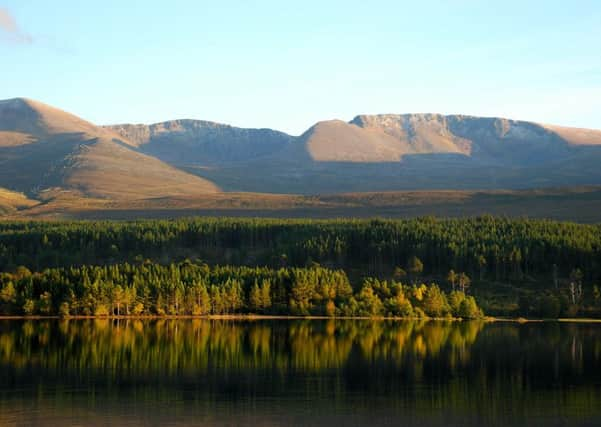Could this be one of the worst jobs in Scotland?


The job certainly has plenty of up-sides beyond the competitive salary. The successful candidate will be based at the Cairngorms National Park Authority HQ in Grantown-on-Spey, and will work what sounds like a pretty civilised 37.5 hour week, with weekends ring-fenced for enjoying all that incredible on-the-doorstep scenery. Also on the table are a cycle-to-work scheme, childcare vouchers, a “generous annual leave allowance” and a competitive pension. All you have to do in return for this bounty is “provide strategic leadership, clear organisational vision and long term direction for the National Park Authority on Conservation and Visitor Experience”.
Easy, right? Well, maybe not. As anyone who’s spent much time in the Cairngorms will tell you, being put in charge of reconciling the conflicting requirements of the tourism industry and the conservation lobby is more-or-less the dictionary definition of being handed a poisoned chalice. Or perhaps it would be more accurate to say that the person who ends up doing this job will find themselves operating as something akin to a human lightning rod.
Advertisement
Hide AdAdvertisement
Hide AdHelpfully, the job ad on the Cairngorms National Park website has a “key work areas” section, so applicants can get an idea of what they’ll be letting themselves in for before they send in their CVs. Point One, “Landscape-scale conservation”, includes, among other things, working with landowners, conservation organisations and others to achieve the “key target” of 5,000 hectares of woodland expansion. Now, you don’t have to live in the Cairngorms – or even in Scotland – to know that there’s currently a bit of a contretemps going on between conservationists, many of whom would like to see certain moorland areas of the park returned to their natural, forested state, and major landowners, many of whom make their money by keeping these areas exactly as they are so they can go on charging wealthy clients for the privilege of shooting the deer, grouse and other critters that inhabit them.
At least, that’s the vastly oversimplified version of the debate. As outlined in an in-depth, 24-page feature in the May issue of National Geographic, entitled Whose Moors Are They?, the facts on the ground are exponentially more complicated, with some scientists pointing out that the existing moors are among the most biologically diverse habitats in Britain and even the pro-tree lobby differing on whether forests should be allowed to grow back naturally (the John Muir Trust) or whether some of the land should be planted with Sitka spruce for lumber (David Read, professor of botany at the University of Sheffield). Confused? You should be.
Meanwhile, Point Two of the “key work areas” list, “Deer Management,” involves dealing with yet another smoking-hot potato: “integrating public interest priorities and deer management into the park.” In addressing this area, the new Director of Conservation and Visitor Experience – assuming he or she is still managing to hold it together after attempting to sort out Point One – will have to contend with a bewildering array of different groups all calling for different things, many of them mutually exclusive. These groups include, but are by no means limited to: conservationists who want to see the deer culled aggressively, thereby allowing forests to grow back and returning the land to its natural state; rewilding experts who believe a drop in deer numbers would be best achieved by re-introduction of the lynx; other rewilding experts who would prefer to see the reintroduction of the wolf; farmers who would rather not have wolves, lynxes or any other apex predators roaming the countryside in case they develop a taste for large mammals other than deer; and landowners who need there to be a plentiful supply of deer in the hills for the foreseeable future, as their income rises and falls in direct proportion to the number available for clients to aim guns at.
There are five more “key work areas” for the new Director of Conservation and Visitor Experience to worry about, but I’m afraid there’s nowhere near enough space to deal with them all here. Let’s just say they include plenty more issues with sleepless night potential, not least the vexed question of “eliminating raptor crime,” which rears its head a little further down the list.
According to the ad, the successful candidate for this job will need to have “strong interpersonal, communication and negotiation skills.” By which they presumably mean a blackbelt in conflict resolution.